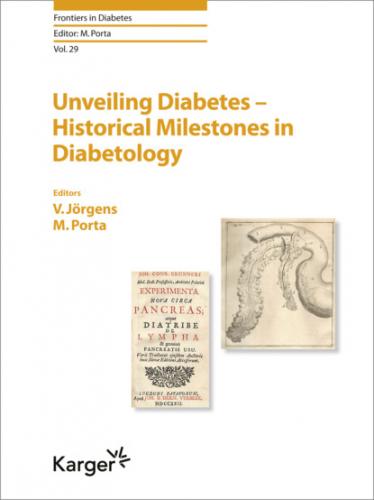In 1993, the Institute of Diabetes, Nutrition and Metabolic Diseases in Bucharest was named after Paulescu on the initiative of Prof. Dr. Iulian Mincu, leader of Romanian diabetology before and after the fall of the iron curtain. His successor, Prof. Ionescu Tirgoviste, took over the role of advocating the memory of Paulescu [31] and led an initiative to honor Paulescu on the international scene. In 2002, the IDF held its World Congress in Paris. The EASD Annual Meeting was embedded in this event, but the IDF was solely responsible for the conference organization. On the occasion of this largest worldwide diabetes conference a bronze bust was ready to be unveiled to commemorate Prof. Paulescu. Glitterati were invited to attend the official ceremony in the Hôtel Dieu, including the IDF President Prof. K.G.M.M. Alberti, the EASD President Prof. P. Halban, and the Head of Diabetology at the Hôtel Dieu, Prof. G. Slama. The Romanian Embassy was also involved. However, everything was cancelled at very short notice. It came to the attention of the IDF and EASD that the Simon Wiesenthal Center had sent a message to the French Minister of Health and the Romanian Ambassador in Paris. The ceremony had to be cancelled – the news of which was in the headlines of Le Monde the following day.
Historical facts were unveiled which had never before been reported internationally. Paulescu’s political activities now came to light and were brought up in the diabetes community [32, 33]. In 1922 Paulescu had set up, along with the extreme right-wing politician A.C. Cuza, the National Christian Union, a virulent anti-Semitic and nationalistic party. The party adopted the swastika as its official symbol. A year later, the two founded the League of National Christian Defense and preserved the black swastika in the middle of the Romanian tricolor as a sign of the new party. Paulescu was the vice-president of this League and the head of the Ilfov branch, at whose inauguration he declared: “Great Romania is like a splendid fruit of stunning beauty. But she’s carrying a parasite in her backyard that sucks her all over. This unadulterated worm is the Jidan [a term for Jews which has a terribly insulting tone in Rumanian], which poisons his sons..., which kidnaps his virgins…”
In 2004, the Wiesel Institute in Bucharest published the final results of the “International Commission on the Holocaust in Romania” [34]. They reported on the impact of Paulescu’s anti-Semitic publications:
Not only Cuza, the head of the party, was influenced by Nicolae C. Paulescu (1869–1931)… Paulescu was self-trained in philosophy, which he sharpened into an anti-Semitic weapon, and, like Cuza, authored pseudo-scientific works that served as vehicles for racial and religious hatred. Paulescu served as co-publisher and wrote regular articles for Apãrarea Naþionalã, Cuza’s newspaper starting in 1922. He wrote articles and books that sought to merge theology, medicine, and science into “philosophical physiology” (fiziologia filozoficã), which was in reality simply a route through which he could express an obsessive anti-Semitism that made his views very appealing to Cuza. Paulescu found the origins of Jewish perfidy in the Talmud, which he determined was a tool for the extermination of other nations, and the kehillah, which he argued secretly plotted the disasters that afflicted the rest of mankind. While he could not have anticipated the Nazi death camps, Paulescu’s condemnation of the Jews was so total that he even went so far as to raise the possibility of “exterminating the infesting evil parasites in the way bedbugs are killed.” Paulescu suggested in his Fiziologia filozoficã Talmudul, Cahalul, Francmasoneria: “That would be the simplest, easiest, and fastest way to get rid of them.”
Paulescu died in 1931 before his political friends came to power and before Rumania became part of the Nazi alliance in the Second World War.
In Paris in 2002, the diabetologists from outside Romania who wanted to assist in honoring his memory had no idea of Paulescu’s dark political past. It was exactly during the years of his important research on insulin that he wrote the most terrible racist articles. As in so many places, the history of anti-Semitism has been dealt with very late – this too applies to Romania. Today we know that with Paulescu we had a horrible fascist among our diabetes research community. Fortunately, he was not awarded the Nobel Prize. What should be the consequence today? Erase his scientific merits? His findings have been published and may have contributed to the progress of the discovery of insulin. But to honor his name with monuments, stamps, or scientific awards seems inappropriate in the light of his political past. Retrospectively, we are ashamed that, because of our ignorance concerning his past, we did not oppose exaggerated honors for this virulent anti-Semite.
References
1Mellinghoff HK: Georg Ludwig Zülzers Beitrag zur Insulinforschung. Düsseldorf, Michael Triltsch, 1971.
2Zülzer G: Innere Medizin, erster und zweiter Band. Leipzig, Dr. Werner Klinkhardt, 1913.
3Zülzer G: Experimentelle Untersuchungen über den Diabetes. Berl Klin Wochenschr 1907;44:474–475.
4Zülzer G: Pancreas preparation suitable for the treatment of diabetes. US Patent Office, serial No. 431,226. Patented May 28, 1912.
5Zülzer G, Dohrn N, Marxer A: Neuere Untersuchungen über den experimentellen Diabetes. Deutsche Med Wschr 1908;34:1380–1385.
6Biedl A: Innere Sekretion. Ihre Physiologischen Grundlagen und ihre Bedeutung für die Pathologie. Berlin, Urban and Schwarzenberg, 1910.
7Best CH: The internal secretion of the pancreas. Canad Med Ass J 1962;87:1046–1051.
8Forschbach J: Versuche zur Behandlung des Diabetes mellitus mit dem Zuelzerschen Pankreashormon. Dtsch Med Wschr 1909;35:2035–2055.
9Forschbach J: Die Therapie des Diabetes melitus (sic!); in Müller E, et al (eds): Die Therapie des praktischen Arztes. Berlin, Springer, 1914.
10Reuter C (summarized by Pierett): La function endocrine du pancréas et la découverte de l’insuline. Bull Soc Nat Luxemb 1924;34:7–15.
11Reuter C: Le sécretion interne du pancréas et le traitment du diabète sucré. Sect Sci Nat Phys Math 1924;8:87–100.
12Hagedorn HC, Jensen N: Om kvantitativ bestemmelse af minimale glucosemænger, særlig i blod. Ugeskr Læger 1918;30:1217–1221.
